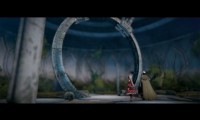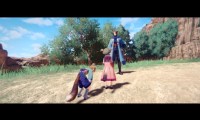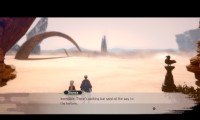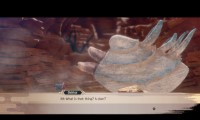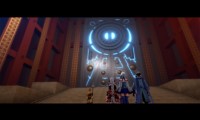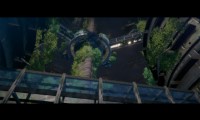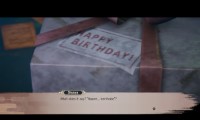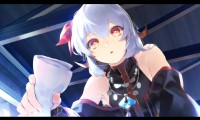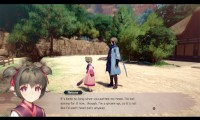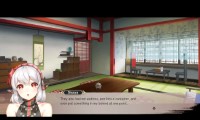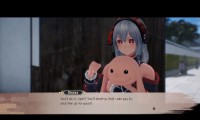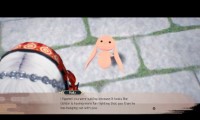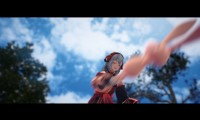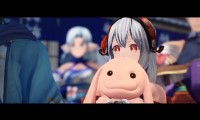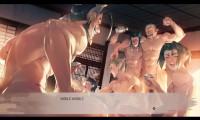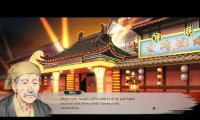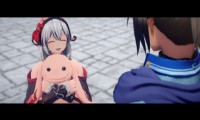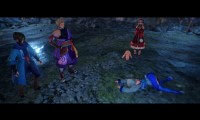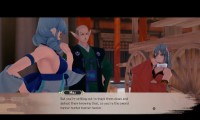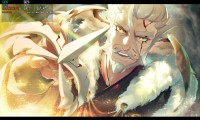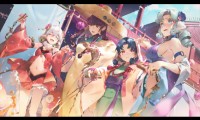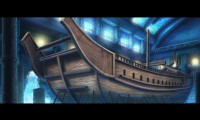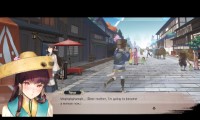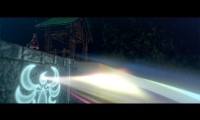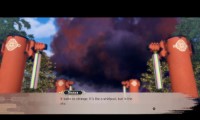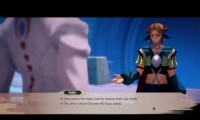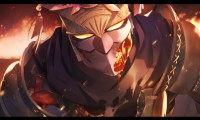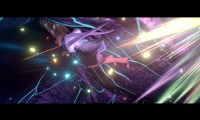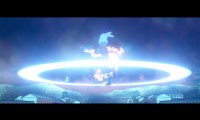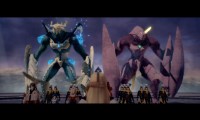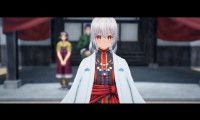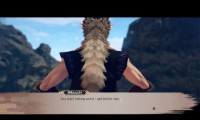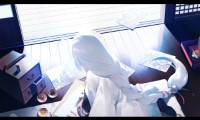Monochrome Mobius
Playtime: 44.5 Hours
Finished 28 April 2025.Played on the Steam Deck in roughly 1.5-2 hour increments, since that's typically as long as I could play before the battery ran out. I don't quite remember what settings I used (probably auto-detected/default), but performance was typically very good outside of a couple of particularly large areas. My playthrough was on the Normal difficulty, and I tried to do as much as I could on the side without obsessively grinding or taking on the superbosses; I'm not that completionist. However, just because of the way the mechanics work in this game, I did notice that I started to really accelerate past the game's intended level benchmarks starting from the halfway point or so of the game.
This game was surprisingly very solid, given that this is Aquaplus's first attempt at a JRPG-style game to my knowledge. As a "prequel" to the Utawarerumono Mask duology, it explores the backstories of a few of the most prominent characters from Yamato, with a party comprised of Oshtor, Mikazuchi, Munechika, and Shunya (who is the only "new" character). The fact that this is actually very closely related to Utawarerumono is probably the first big issue of this game; the name "Monochrome Mobius" doesn't really mean anything in the series, and is probably a significant reason why this actually ended up doing very poorly despite its close ties to a beloved trilogy.
My main interest in this game was in the character development and story, which were similarly the strong points of all the other Utawarerumono games. I don't think this game's writing was quite up to par with the other VNs, but was more than serviceable, providing some interesting context to the culture of the world. Much of it is inherent to the genre; while the VNs can dedicate the vast majority of their playtime towards story scenes with a much smaller emphasis on the combat, a JRPG requires more gameplay in the same runtime which results in less conversations overall, especially related to the small details of life in the world. Instead of long scenes displaying the peaceful lives of the characters or the slow moves of political intrigue, dialogue in this game must first and foremost direct you to different locations and missions where you get to kill stuff. Given that my playtime of this is not dissimilar to MoD and MoT (actually being quite a bit shorter than MoT), a direct comparison is impossible.
However, even outside of the fundamental, structural issues with the JRPG format discussed above, I still think this game has other issues narratively - namely that it feels somewhat incomplete, resulting in awkward pacing. While the first few chapters do a great job pacing out an exciting start of the adventure, the story kind of stalls a bit once you get to the Capital, spending a few chapters meandering among various menial or otherwise irrelevant tasks with little to no meaningful character development on an individual level. Even though the party feels quite close for most of the game, the major bonding moments happen right before the end of the game. It really threw me for a loop, as I felt there were so many things left unanswered; the true nature of Shunya and Mayacowl, pretty much any details about Arva Shulan, and much more.
A lot of the problems with the story being incomplete feel justified by the fact that the ending is very heavily baiting for a sequel, which I think is a bit of a mistake (if looking at the failure of DX:MD). Throughout the entire game, I was wondering what they would do with Shunya, as there is obviously no reference to her whatsoever by the timeframe of the Mask games. It turns out that there's nothing particularly special about her in this game, though there are hints that she is related to the two sisters. In a post-credits scene, she appears to be possessed by an entity named Tezcatlipoca (Arva Shulan makes several visual and cultural references to Aztec mythology, and Mayacowl names the final boss monster's arm "Quetzalcoatl"). There's no real explanation why though, so I guess those will be answered later. Where I stand with this now, given that there is only a hint of the sequel to this (which was announced at an Aquaplus event shortly before I finished the game), is that this feels like the "Mask of Deception" part of another duology. Maybe it'll all come together in the next game, but I just hope that if nothing else, there is no reference to any kind of time travel or multiworld in this universe.
All the plot implications aside, I think the general mechanics of the game are decent but not exemplary. In combat, I feel like the ring system in the turn based combat isn't handled too well. The idea of staggers & certain status effects "elevating" you is nice, but the way that the game is balanced in practice is not conducive to this at all. All normal enemies die too quickly for the ring system to even become relevant, and the developers decided to give pretty much all larger enemies insane stagger and ailment resists, to the point that the ring system is almost never a serious consideration for the player in an offensive context. In a defensive context, lots of enemies are given ridiculously boosted stagger rates on their attacks for whatever reason, and will often instantly stagger any of your characters in one or two hits. Since there aren't any direct stagger mitigation or recovery options in the game and the meter is invisible, the mechanic is typically only used to force your characters to defend at certain points. This is one aspect of the game where I really noticed that the developers didn't have much experience in the genre, as it's a mistake lots of JRPGs make.
Outside of the individual battles, the general feel when traversing the overworld is pretty decent! The world doesn't really feel as alive as some other JRPGs are, but there are plenty of NPCs to talk to in each region so the world feels far from lifeless. The idea of investing into the equipment shops to expand gear fortification options is cool, and the ability to upgrade Halu's combat and field abilities to grant your party a number of very useful perks is very neat, and felt like a useful purpose for all of the random resources you pick up throughout the game (without making it a crafting nightmare). Sidequests were pretty easy to find, and though simple, gave some useful rewards and an incentive to fully explore the expansive maps in the game. Finally, when roaming the overworld, I like that they included an instakill mechanic when you are overleveled for an area - though this does eventually become a serious issue. Since EXP scaling never changes dynamically regardless of how high your level is, it's super easy to get the EXP train rolling once you start getting some free kills - as you need the resource drops as well. I ended up being so heavily overleveled for the last couple of regions that I could basically instakill everything other than the bosses, which also ended up trivializing the bosses too.
Even though some of the key art looks kind of weird to me as they aren't in the same style of the other Utawarerumono games, the actual in-game 3D models look great in my opinion. They're very reminiscent of the aesthetic used in the SRPG sections of the VNs, but a lot more detailed and much closer to real proportions instead of being chibi-esque. Music is also very good; the game feels very cohesive overall when it comes to audiovisual design. Overall, I think this game was a pretty solid first step into a potential sub-series of the Utawarerumono franchise, though I'd prefer if this storyline in itself doesn't end up spawning new timelines. Unless there's a serious issue with its sequel, I'll almost certainly be playing it at some point.
